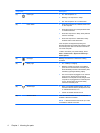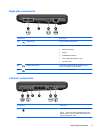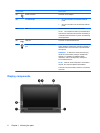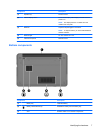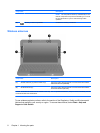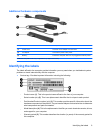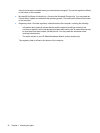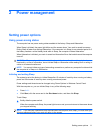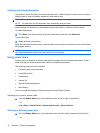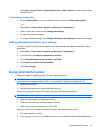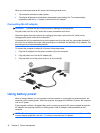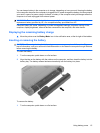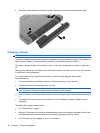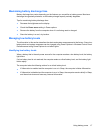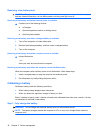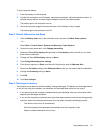
Initiating and exiting Hibernation
The system is set at the factory to initiate Hibernation after 1,080 minutes of inactivity when running on
battery power or when the battery reaches a critical battery level.
NOTE: The system will not initiate Hibernation when running on external power.
NOTE: To reduce the risk of information loss, periodically save your work.
Power settings and timeouts can be changed using Power Options in Windows Control Panel.
To initiate Hibernation:
▲
Click Start, click the arrow next to the Shut down button, and then click Hibernate.
To exit Hibernation:
▲
Briefly slide the power switch.
When the computer exits Hibernation, the power light turns on and your work returns to the screen where
you stopped working.
NOTE: If you have set a password to be required when the computer exits Hibernation, you must enter
your Windows password before your work will return to the screen.
Using power plans
A power plan is a collection of system settings that manages how the computer uses power. Power
plans can help you conserve power and maximize computer performance.
The following power plans are available:
●
Portable/Laptop (recommended)
●
Home/Office Desk
●
Presentation
●
Always On
●
Minimal Power Management
●
Max Battery
You can change the settings of these power plans through Power Options.
Viewing the current power plan
▲
Click the Battery Meter icon in the notification area, at the far right of the taskbar.
– or –
Select Start > Control Panel > System and Security > Power Options.
Selecting a different power plan
▲
Click the Battery Meter icon in the notification area, and then select a power plan from the list.
– or –
12 Chapter 2 Power management



